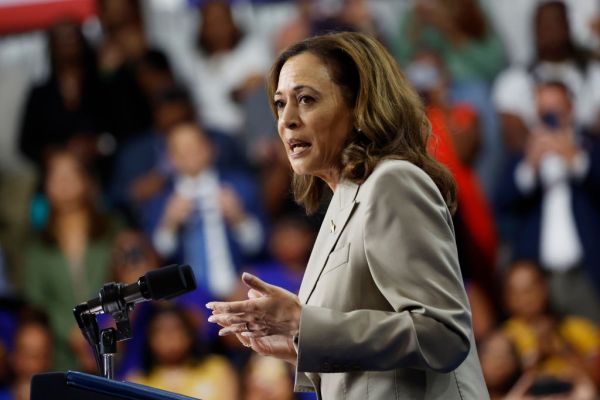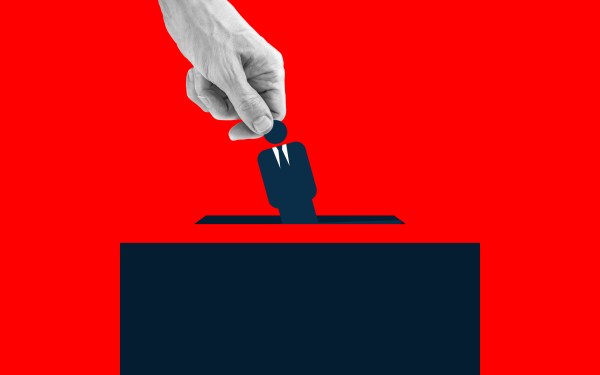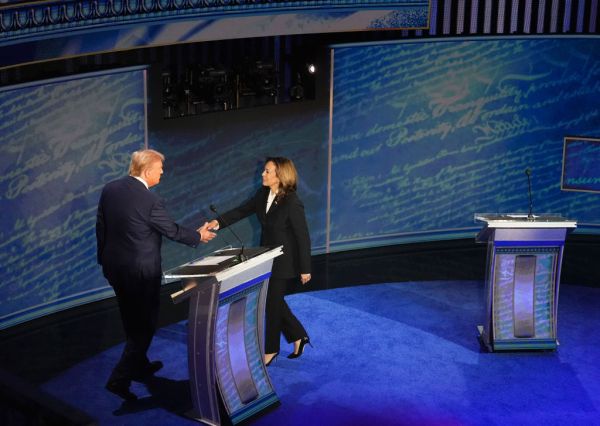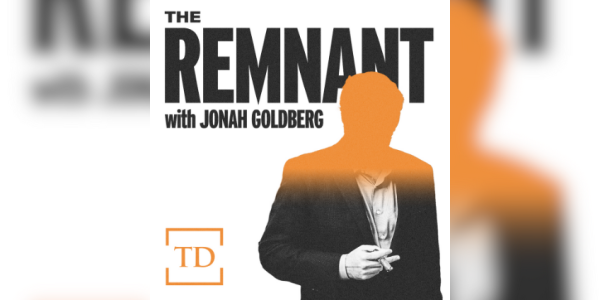Vetting running mate prospects is complex, laborious, meticulous. Done properly, the process takes several months. Having been thrust into the 2024 presidential contest in late July after President Joe Biden dropped his reelection bid, Vice President Kamala Harris had only two weeks.
That might explain why her campaign was forced to make adjustments to the online biography of Tim Walz—specifically, an element of his military service record—soon after the Democratic nominee revealed the Minnesota governor as her running mate. Harris’ short vetting timeframe also might explain her campaign did not respond to questions from The Dispatch about Walz’s association with an antisemitic Minneapolis imam, although it came prior to Hamas’ deadly October 7 terrorist attack on southern Israel.
Then again, Donald Trump had plenty of time to vet J.D. Vance before selecting the Ohio senator as his running mate. Vance nonetheless spent his first two weeks as the Republican vice presidential nominee dogged by fresh or revived revelations of controversial past statements and writings. Indeed, his favorability ratings have dipped since the GOP convention in mid-July, while Walz’s numbers seem to be holding steady roughly 10 days in.
To learn the basics of how an exhaustive, conventional vice presidential vetting process might unfold, we spoke with Republican operatives who worked on Mitt Romney’s campaign in 2012, when the former Massachusetts governor, now a Utah senator, was the GOP presidential nominee. But before the vetting can begin, a list of prospective vice presidential candidates is compiled.
How the choice plays politically—in crucial battleground states and with targeted voters—often receives top consideration. But so does personal chemistry with the nominee and qualities he or she is looking for in a governing partner. And in Romney’s case, picking a running mate who could function as a hands-on governing partner, to push forward an aggressive domestic and foreign policy agenda, was a major priority. That had a lot to do with why Romney zeroed in on Paul Ryan, then a Wisconsin congressman, and eventually added him to the ticket.
“The vet was pretty damn thorough,” recalled a Republican strategist involved in the process that yielded Ryan.
Unlike Harris’ rushed selection of Walz, a top Romney aide initiated running mate vetting no later than March of 2012, roughly five months before Ryan’s August 11 unveiling. Beth Myers, a top Romney adviser, oversaw the secretive process.
First, Myers assembled a lengthy list of candidates, some predictable, some outside the box, complete with one-page biographies for each. Then her team conducted deeper dives and produced three-page “narratives” about 10-15 potential running mates. By early May—three months before Romney would make his final decision—this list was reduced to five, and full vetting commenced. That included criminal background checks; deep dives into financial, business, and political dealings; granular exploration of personal lives; and multiple interviews.
A tight circle of campaign aides and outside advisers participated in these investigative activities: Myers; her assistant, who handled coordination and logistics; three attorneys who traveled to campaign headquarters in Boston to review vetting materials and draft the dossiers; two researchers who conducted standard, Internet-based background fact-finding; and an accountant to review financial records.
As the vetting progressed, they continuously refined dossiers on each prospective pick as they acquired more information, as individuals provided more details on their personal lives, and as campaign officials discussed potential red flags in interviews. Because the Romney campaign had enough lead time to conduct a methodical and rigorous evaluation of each Republican under consideration, it was prepared for the intense but standard scrutiny faced by Romney’s eventual running mate.
“When we rolled out Paul Ryan, none of the hits he took were unknown to us,” Myers said. “Yes, there was a lot of media incoming—and we knew all of it. They were all in my dossier.”
There is no such thing as a flawless vice presidential nominee—Democrat or Republican. Candidates are human and make mistakes—personal and otherwise—leaving behind some aspect of their lives for political opponents, or the press, to pounce on. Political pundits might speculate that the Harris campaign was not fully aware of Walz’s past association with the imam who would later go on to praise Hamas’ October 7 attack on Israel. They might ask whether the Trump campaign was aware of Vance’s past musings about “childless cat ladies.” Vetting misses? It’s actually quite possible the information is in their dossiers.
Notwithstanding the fact that the Harris campaign was forced to rush research and selection of a running mate, operatives who have been involved in assessing potential picks say there is virtually no such thing as a candidate who leaves zero issues for opponents or a political press corps to uncover. Those imperfections are rarely a death knell for a White House campaign but can create challenges for the team of press aides assigned to the running mate.
Indeed, preparing to handle the media barrage is an ancillary part of the vetting process that involves more than batting down damaging stories.
Because the nominee’s top choices for vice president are so closely held, senior communications operatives are typically charged with developing press strategies for multiple potential picks, so that they’re ready to go regardless of who gets the nod. Doing so can include writing skeletons of nomination acceptance speeches to be delivered at the party’s convention. Operatives thumb through dossiers to familiarize themselves with strengths and weaknesses, both to maximize the running mate’s value to the campaign and navigate any political minefields.
Back to Romney and Ryan: The Romney campaign had assigned a communications team to the running mate before it was clear exactly who the nominee would select. To prepare for whomever Romney would pick, the team drew up a “rollout plan” that focused on exposing the vice presidential nominee to dozens of media outlets in the swing states that would decide the election, plus a handful of national outlets.
Once Ryan was chosen and introduced, his communications aides made a series of adjustments, including which outlets were granted interviews with the running mate based on what the Romney campaign felt was increasingly hostile and unfair coverage. Additionally, the campaign concluded after a few introductory events in which Romney and Ryan appeared together that the two Republicans had good personal chemistry, so the decision was made to put them on the road together for more campaign events beyond what was initially planned.
Kevin Madden, senior adviser to Romney’s 2012 presidential campaign, recalled what it was like to prosecute a press strategy for Ryan with minimal advance notice.*
“Guys like me, tasked with managing day-to-day communications for the campaign—I wasn’t read in until the day before,” Madden said. “The VP communications team knew who the candidate was when everyone else [on the campaign] did, and then they were given all of the materials.”
Correction, August 16, 2024: This story originally misstated Kevin Madden’s title with the 2012 Romney campaign. He was a senior adviser.









Please note that we at The Dispatch hold ourselves, our work, and our commenters to a higher standard than other places on the internet. We welcome comments that foster genuine debate or discussion—including comments critical of us or our work—but responses that include ad hominem attacks on fellow Dispatch members or are intended to stoke fear and anger may be moderated.